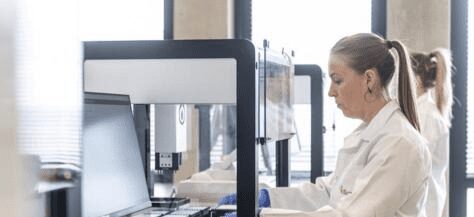NYU's iGEM team conceived a more scalable approach to making flavonoids with the help of the Opentrons OT-2 automated pipetting platform.
At this year's iGEM event, Opentrons sponsored ten teams. In this report, we will showcase the efforts of the New York University iGEM team . Their project—by finding more scalable ways to make flavonoids—is both ambitious and practical, embodying Opentrons’ open source ethos and in line with iGEM’s principles of using synthetic biology to change the world.
Improve accessibility and scalability through laboratory automation
Flavonoids are compounds found naturally in plants that have antioxidant, anticancer and anti-inflammatory, and antimutagenic effects. This makes them widely in demand across a wide range of industries, from pharmaceuticals to cosmetics to textiles.
However, the supply of flavonoids on the market is currently limited due to the high cost and difficulty of extraction methods. Long plant growth cycles and low concentrations of flavonoids in any given plant result in low yields. NYU wanted to know whether lab production could speed up the plant's metabolic processes and, if so, whether it could provide a more efficient, reproducible and scalable method for extracting flavonoids.
So the team set out to design a replicable, scalable method for engineering E. coli to produce flavonoids. They aimed to produce recombinant flavonoids through metabolic engineering pathways, using a novel optogenetic approach that reduces reliance on more traditional chemical induction processes.
“I have only used one other automated pipetting platform, but the OT-2 is actually very easy to use. It performs extremely well.”
“Our plan is to integrate NEB Biolabs’ restriction enzyme digestion and ligation protocols and make them fully automated,” said NYU alumnus and doctoral candidate Steven Ionov, Leads a team of eight undergraduate students. Team members know that increasing lab efficiency will help achieve their goals, so they plan to bring Opentrons OT-2 The pipetting robot incorporates the most core procedures in their project: digestion and ligation of the 3A assembly protocol.
Their procedure involves "preparing digestion reactions in 200-ml tubes in a thermostatic cycler," Ionov said. He and undergraduate Neil Pandyas learned how to use OT-2, while other team members designed a bioreactor that uses green light to activate and grow cells, reducing traditional reliance on chemical inducers.
"I've only ever used one other pipetting workstation," says Ionov, "but the OT-2 is actually very easy to use. It's outstanding. Not only was learning Python an amazing experience, but the ease of calibration and Opentrons The intuitiveness of the actual programming materials makes it a very good experience. ”
Pandias agreed with Ionov's enthusiastic assessment. “Working with Opentrons is very exciting for our team,” she said. “The robot was easy to calibrate; we conducted some experiments relying on the Opentrons website and API for guidance.” In addition to customizing the project to use 300 ml pipette tips, NYU iGEM easily integrated Opentrons into their existing experiments There is little need for additional customization in the laboratory workflow.
Adaptive problem solving and project results
Still, NYU iGEM found that technical proficiency alone could not overcome protocol challenges. The 3A assembly connection didn't work, and the team spent a lot of time troubleshooting: Was the problem with the enzyme, the cells, or the protocol itself? The team's troubleshooting process for these issues is carefully documented to ensure that future teams can reduce errors and make more progress.
“This is our first year,” Pandias explained. “We had a learning curve, as every first-year iGEM team does.” Given these issues and the time constraints of the competition, NYU iGEM was forced to pivot from its original plan to using the OT-2 for sampling instead of pressing The original plan was to prepare for the digestive reaction. Fortunately, the OT-2 also handles this task well. Mostly. “There’s just one drop of EcoRI at a time instead of a microliter, and that makes a little difference,” Ionov said. "We encountered the same problem on the bench," Pandias added. "Even if you sample with a handheld pipette, it's very difficult to get such a small amount of viscous material out of the pipette tip. I can understand why automated pipetting platforms would have similar problems."
Temporary setbacks, great progress
Despite the setbacks in the lab, the overall plan for the project demonstrates a long-term vision. Therefore, the restrictions on the use of OT-2 are only a temporary setback and will not affect the long-term development of the project. NYU iGEM gained a better understanding of their field without undermining the long-term viability of their program. Today, OT-2 has become a trustworthy technology platform in their laboratory, helping them automate experimental processes. In the future, OT-2 will continue to provide them with more automated services.
We greatly appreciate NYU's hard work and look forward to seeing how they progress.
If you are curious about whether automation may be a good fit for your laboratory workflow, please contact us for a free consultation.




